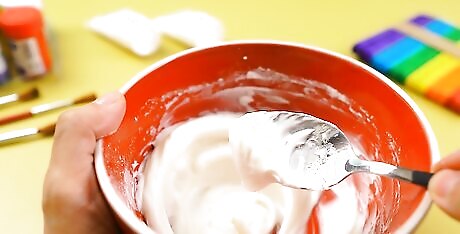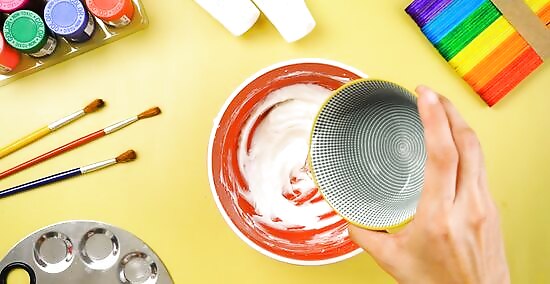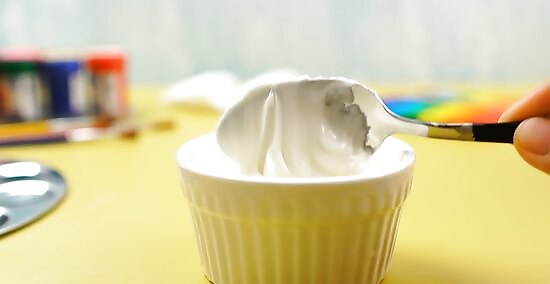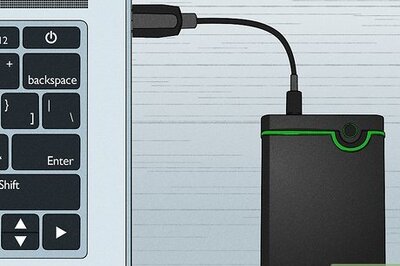
views
Making Basic Cornstarch-and-Lotion Paint

In a bowl, combine cornstarch, lotion, and water. Face paints are made out of two parts: the base and the color. First, we'll make a neutral base that we can add any color that we wish to. Stir until smooth. Note that, in the UK, cornstarch is typically called "cornflour" — the ingredients are identical. Ideally, you'll want to use a white lotion so that it won't affect the color of the face paint. If you don't have lotion, you can get away with using any mild skin cream, like cold cream, shea butter, and so on.

If desired, add more of either ingredient to change the base texture. The recipe above should work well on its own in most cases. However, if you don't like your results, you can add more cornstarch to make the mixture thicker and more lotion or water to make it thinner — it's up to you!

Scoop the base mixture into a small container. Once you have your base just the way you like it, use a clean spoon to transfer it to its own small container. Ideally, this container will be one that you have multiple of — as you make more colors, you can keep them together in their separate containers for convenience. One cheap and creative way to store face paint is to use an egg carton. Put a little base in each compartment individually, leaving them about halfway full to prevent spillage when you mix in the colors. Another good choice for this is to use leftover baby food containers — they're usually just the right size to hold face paint.

Add food coloring. Put a few drops of your preferred food coloring in your neutral base. Stir thoroughly to combine until the color is smooth and even. You may need to add a little more food coloring than you first think is necessary — keep in mind that this paint will be spread fairly thin when it is worn. Not sure how to make the color you want? Consult a color-mixing guide, which are common in painting and design sites like this one. You can also try WikiHow's own color-mixing guide. If you're worried about using commercial food coloring in your child's face paint, don't worry! There are a wide variety of natural ingredients that can be used to give your face paint color — see the section below for more information.

Make more base and repeat. At this point, you can just repeat the steps above, using different colors each time, to create a whole rainbow of colors. Remember to keep each color in its own container to prevent mixing. To apply your face paint, use a cotton swab, a Q-tip, or a gentle brush.
Making Clown-Style Paint

Mix the shortening, Vaseline, and food coloring. Compared to the recipe above, this face paint is much thicker. This means that if we wait until the end to add the color, it can be difficult to distribute it throughout the paint. Instead, this time, we'll add it first with the "wet" ingredients. Mix to combine until the mixture has a smooth, consistent color.

Gradually add the cornstarch and flour. Next, add your powdered ingredients a little bit at a time. Stir as you go to ensure the color combines evenly. When you're finished, if you find that your color is too faint, feel free to add more and continue stirring. After mixing your shortening and your powdered ingredients, the texture should be chunky or even chalky. This is good — like a clown's greasepaint, this recipe should be solid enough to handle. Note that the recipe calls for a teaspoon of flour — not a tablespoon

Store as above. When this recipe is done, you can handle and store it exactly as you would with the liquid face paint above. Once again, egg cartons and baby food containers work well for keeping each color separate from the others. Apply the finished face paint with an old makeup applicator, a Q-tip, or a light, clean sponge.




















Comments
0 comment